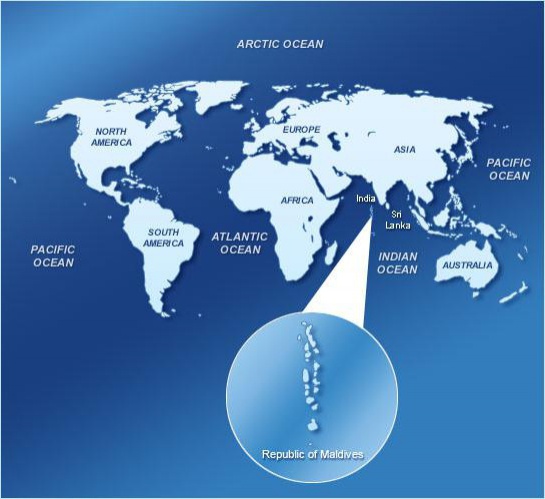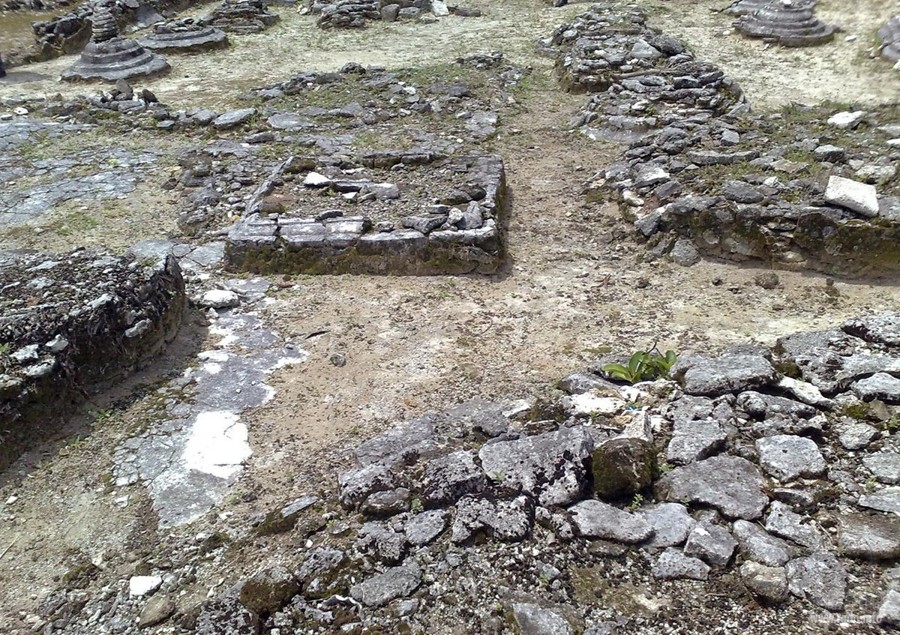I would like to tell you about a wonderful place on our planet – the Maldives, but not in terms of tourist attractions. Let us look at this paradisiacal corner of the world from an archaeological perspective, certainly with due regard for the Primordial Knowledge.
Wikipedia note: The Republic of Maldives is located in the equatorial waters of the Indian Ocean, approximately 700 km to the southwest of Sri Lanka. It’s a chain of 20 atolls consisting of 1,192 coral islands. The country population is 402,071 people, including 338,434 citizens and 63,637 non-citizens (results of the population census of 20 September 2014). The major religion is Islam.



Owing to the great traveller and remarkable scientist Thor Heyerdahl, today we can glance into the depth of ages and consider the Maldivian history in detail. In his book The Maldive Mystery Thor describes how various religions superseded each other on these islands, destroying temple buildings of their predecessors and erecting their own structures instead.
Before Islam the dominant religion on the islands was Buddhism, which is evidenced by discovered stupa temples and Buddha figurines. Local inhabitants still call any figurine or image budu. Before archaeologists arrived, all such statues, figurines and images had been mercilessly destroyed, since in Islam any depiction of people or animals is forbidden.

Besides Buddhism, there were other religions, e.g. Hinduism. At that, representatives of all religions built their own temples at sanctuary sites of the “sun worshippers”. Such term exists in archaeology because diverse images of the sun (or circles that are usually regarded as the sun) were a prevalent motif in mural paintings of ancient cultures. Who were the sun worshippers?
A distinctive feature of their architecture was unusual masonry, where junctions between stone blocks were made without any mortar, and even a blade could not fit in-between – so tight the blocks were attached to each other. Stones were perfectly grinded. “There were stones with broken contours; nonetheless, they sided with adjacent plates like pieces of mosaic,” Thor Heyerdahl describes.


Does it resemble anything? In the same way the pyramids were constructed.
These walls reminded me of the remote parts of the Earth I had visited in endeavour to trace maritime routes of the most ancient human migrations. I saw masonry typical for the peoples connected with the sea, whose representatives crossed the oceans. For the first time I saw such walls on the most secluded piece of dry land – Easter Island; then in the places where the Inca people had lived in South America. Later on I encountered such walls on the Atlantic coast of North Africa, in Asia Minor, and finally on Bahrain Island in the Persian Gulf. Every time the typical walls were accompanied with ships bound of stems; every time I further approached the Indian Ocean, and now I see a familiar specimen of peculiar masonry on one of islands in this ocean. Hence, such technique spread along a half of the terrestrial sphere circle, where the antipodes are Easter Island and the Maldives.
Temples of the “sun worshippers” represented pyramids similar to those of Mexico. These temples were oriented strictly from the south to the north and from the west to the east, in line with the sun as archaeologists say. They were covered with soil inside, i.e. their whole purpose boiled down to external contemplation. The pyramids had truncated tops. But the most interesting are images on facing plates of these pyramids, where swastika, lotus and many other symbols are found.

Large artificial hills and mound remains, visible from the sea, which made a filler of pyramidal temples faced with limestone blocks.

Ancient constructors on the Maldives were called Redins. The community was headed by the queen. Redins not only erected megalithic temples and pools with interesting symbols, but also built ships on which they crossed the oceans. Moreover, a great number of little towers have been found, the purpose of which remains unclear.

In conclusion I would like to say that, if ancient constructors erected their buildings according to a certain plan as it is assumed in the article http://rgdn.info/en/mesta_sily._ley-linii, they did succeed to ensure that divine services are carried out in temples even today. No matter which religion came to the islands, it built its sanctuaries on the magnificent foundation created by the ancient constructors. Hence, their plan or warning may be unravelled by us – people of the Crossroads time.
Prepared by Elena
 The Maldives from an archaeological perspective
votes:
118
The Maldives from an archaeological perspective
votes:
118
|

Project Aim










Leave comment